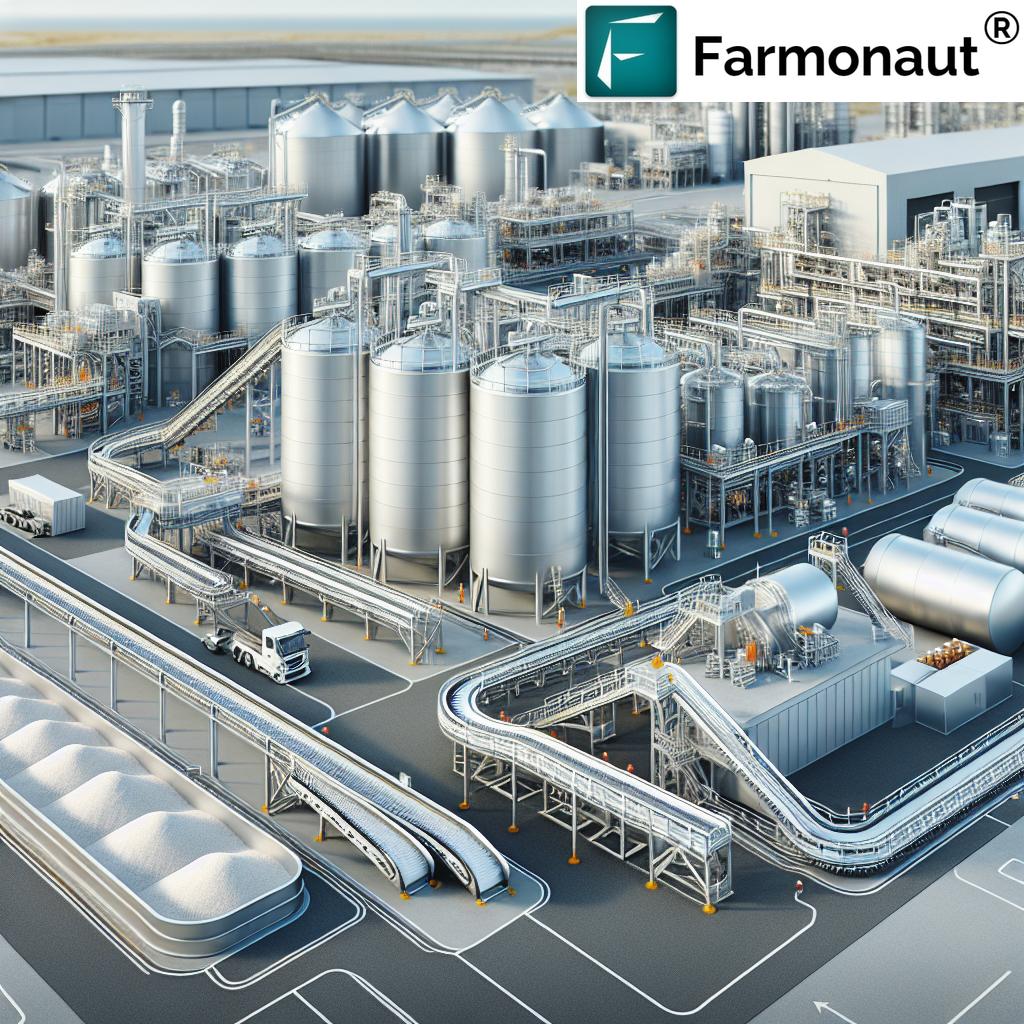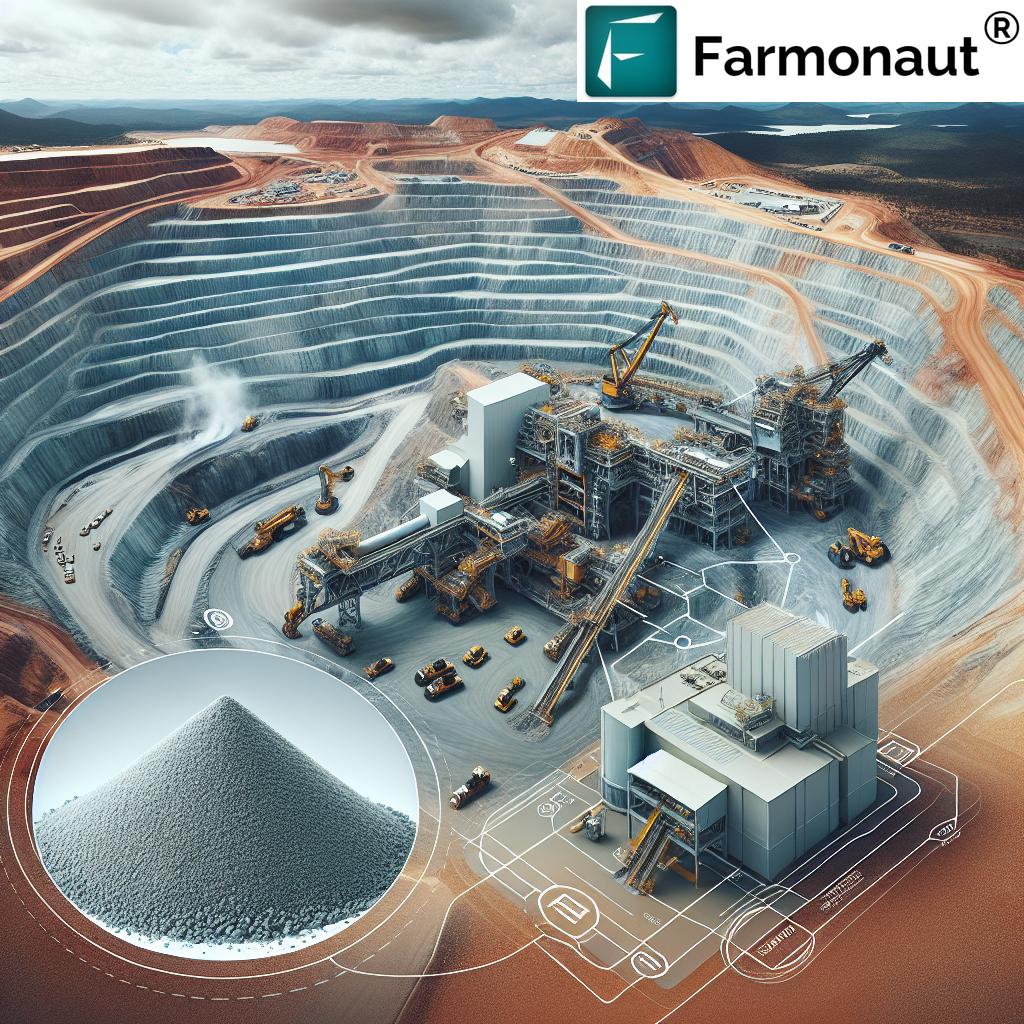Unlocking Australia’s Lithium Potential: Navigating Challenges in Hydroxide Production and Spodumene Concentrate Markets

“Australia’s lithium industry anticipates first output from a major hydroxide facility by mid-2025, marking a significant milestone.”
In the ever-evolving landscape of global energy production, Australia has emerged as a key player in the lithium industry. As we delve into the intricacies of lithium hydroxide production and spodumene concentrate markets, we find ourselves at the forefront of a resource revolution that promises to reshape the future of energy storage and electric vehicle manufacturing. In this comprehensive exploration, we’ll navigate the challenges and opportunities facing Australia’s burgeoning lithium sector, with a particular focus on recent developments in refinery commissioning and processing.
The Australian Lithium Landscape: An Overview
Australia’s position as a leading lithium producer is underpinned by its vast reserves of spodumene, a mineral rich in lithium content. The country’s lithium industry has been rapidly expanding, driven by the global demand for electric vehicles and renewable energy storage solutions. However, the path to dominance in the lithium hydroxide market is not without its hurdles.
As we analyze the current state of the industry, it’s crucial to understand the interplay between spodumene concentrate extraction and the more complex process of lithium hydroxide production. This vertical integration represents both a challenge and an opportunity for Australian companies looking to maximize their position in the global supply chain.
Wesfarmers’ Ambitious Lithium Hydroxide Venture
At the heart of Australia’s lithium hydroxide ambitions lies Wesfarmers’ Kwinana facility, a project that epitomizes the country’s push towards higher-value lithium products. The 50,000 t/yr lithium hydroxide refinery, developed in collaboration with Chilean lithium firm SQM, represents a significant investment in Australia’s downstream processing capabilities.
- Commissioning progress: 64% complete as of February 2024
- Expected first output: Mid-2025
- Production target (WesCEF’s share): 190,000t of spodumene concentrate for July 2025-June 2026
The project’s progress is being closely watched by industry observers, as it will serve as a litmus test for Australia’s ability to move up the lithium value chain. Wesfarmers’ managing director Rob Scott expressed cautious optimism about the facility’s future, stating, “We feel that we have adequate experience [and] capability together with our team in SQM to commission and run [the facility] successfully.”
Navigating Technical Challenges in Lithium Processing
The journey from spodumene concentrate to lithium hydroxide is fraught with technical complexities. Western Australia, while rich in lithium resources, faces a steep learning curve in developing the necessary processing expertise. This challenge was highlighted by industry analysts and echoed by comments from Albemarle’s CEO Kent Masters during a recent conference.
Despite these concerns, Wesfarmers remains confident in its ability to overcome technical hurdles. Aaron Hood, managing director of WesCEF (Wesfarmers’ chemicals, energy, and fertilizers arm), emphasized the long-term viability of their vertically integrated operation, stating, “When you look at that vertically integrated operation once we hit full production run rates and get to fractionalise that cost, we still think it’s a viable and beneficial project for Wesfarmers.”
The Mount Holland Project: A Collaborative Venture
Central to Wesfarmers’ lithium strategy is the Mount Holland project, operated by Covalent Lithium—a 50:50 joint venture between Wesfarmers and SQM. This collaboration exemplifies the trend towards strategic partnerships in the lithium industry, combining local expertise with international know-how.
- WesCEF’s share of spodumene concentrate output (July-December 2024): 70,000t
- Sales of spodumene concentrate (same period): 80,000t
The project’s output aligns with guidance, demonstrating the potential for increased production throughput. However, the transition from concentrate sales to hydroxide production presents its own set of challenges.
Market Dynamics and Financial Implications
The lithium market is notorious for its price volatility, and recent trends have had a significant impact on Australian producers. WesCEF’s lithium business reported a loss of A$24mn ($15.3mn) in the July-December 2024 period, attributed to lower lithium market prices and higher unit costs during the production ramp-up phase.
“Global lithium market dynamics are influenced by key players in China and Singapore, shaping price fluctuations and industry trends.”
Argus-assessed prices for 6% grade lithium concentrate (spodumene) have shown a downward trend, with recent figures indicating a range of $850-910/t cif China. This market softness presents a challenge for producers as they balance the need for revenue from concentrate sales with the long-term goal of transitioning to higher-value hydroxide production.
The Road to Profitable Hydroxide Production
As Wesfarmers and other Australian lithium companies navigate the path to full-scale hydroxide production, they face a period of financial uncertainty. Hood acknowledged the challenges ahead, noting that it would be “challenging” to generate profit through lithium hydroxide sales in the July 2025-June 2026 period as the refinery undergoes its ramp-up phase.
This transition period underscores the importance of maintaining a robust spodumene concentrate business while developing hydroxide capabilities. Companies must carefully manage their resources and market expectations during this critical phase.
Global Market Perspectives: China and Singapore
The Australian lithium industry does not operate in isolation. The global market, particularly dynamics in China and Singapore, plays a crucial role in shaping the industry’s future. China, as the world’s largest consumer of lithium products, exerts significant influence on pricing and demand patterns.
Singapore, with its strategic position as a financial and trading hub, serves as a key intermediary in the lithium market. The city-state’s role in price discovery and contract negotiations cannot be understated, making it an essential consideration for Australian producers looking to optimize their market strategies.
Technological Advancements in Lithium Processing
As the industry grapples with technical challenges, there’s a growing focus on innovative solutions to enhance lithium processing efficiency. Advanced technologies, including those leveraging artificial intelligence and machine learning, are being explored to optimize extraction and refining processes.
In this context, companies like Farmonaut are making significant strides in revolutionizing land use and resource management across various sectors, including mining. While not directly involved in lithium production, Farmonaut’s satellite-based technologies and AI-driven insights offer valuable tools for resource exploration and environmental monitoring—critical aspects of sustainable lithium production.
Environmental Considerations and Sustainable Practices
The lithium industry’s growth comes with increased scrutiny of its environmental impact. Australian producers are at the forefront of developing sustainable practices, from water conservation in brine extraction to minimizing the carbon footprint of processing operations.
Initiatives aimed at reducing energy consumption and implementing closed-loop systems are becoming increasingly important. These efforts not only address environmental concerns but also contribute to long-term cost reduction and operational efficiency.
The Role of Government Policy and Support
Government policy plays a crucial role in shaping the future of Australia’s lithium industry. Support for research and development, tax incentives for downstream processing, and infrastructure investments are all critical factors in maintaining Australia’s competitive edge in the global market.
As the industry evolves, there’s a growing call for a comprehensive national strategy to address challenges and capitalize on opportunities in the lithium value chain. This includes fostering innovation, supporting workforce development, and ensuring regulatory frameworks that balance economic growth with environmental stewardship.
Future Outlook: Challenges and Opportunities
As we look to the future of Australia’s lithium industry, several key factors will shape its trajectory:
- Market demand fluctuations and price volatility
- Technological advancements in battery technology
- Competition from other lithium-producing countries
- Geopolitical factors affecting global supply chains
Despite these challenges, the outlook for Australia’s lithium sector remains cautiously optimistic. The country’s vast resources, coupled with ongoing investments in processing capabilities, position it well to capitalize on the growing global demand for lithium products.
Earn With Farmonaut: Join our affiliate program and earn 20% recurring commission by helping farmers save 10%. Onboard 10 Elite farmers monthly to earn a minimum of $148,000 annually—start now and grow your income!
Lithium Industry Trends Comparison
| Industry Aspect | Current Status | Challenges | Future Outlook |
|---|---|---|---|
| Lithium Hydroxide Production | Ramping up with major facilities under construction | Technical expertise, high initial costs | Increasing capacity, potential market leader |
| Spodumene Concentrate Market | Strong production, price fluctuations | Market volatility, oversupply concerns | Stabilizing prices, strategic importance |
| Refinery Commissioning | Progress in key projects like Kwinana | Technical hurdles, timeline delays | Improved efficiency, increased output |
| Vertically Integrated Operations | Growing focus, some projects underway | High capital requirements, operational complexity | Enhanced value chain control, cost optimization |
| Joint Ventures | Increasing collaborations (e.g., Wesfarmers-SQM) | Aligning interests, knowledge transfer | More strategic partnerships, global integration |
| Market Price Fluctuations | Recent downward trend | Profitability concerns, investment uncertainty | Potential stabilization, demand-driven recovery |
| Global Market Dynamics (China/Singapore) | Significant influence on pricing and demand | Geopolitical risks, market access | Diversification of markets, strategic positioning |
Conclusion: Navigating the Lithium Landscape
Australia’s lithium industry stands at a pivotal juncture, poised to capitalize on the global shift towards renewable energy and electric vehicles. The challenges in hydroxide production and market volatility are significant but not insurmountable. As companies like Wesfarmers push forward with ambitious projects, the industry’s collective expertise and resilience will be key to overcoming technical hurdles and market uncertainties.
The success of ventures like the Kwinana lithium hydroxide refinery will be crucial in establishing Australia’s position as not just a provider of raw materials but as a sophisticated producer of high-value lithium products. This transition up the value chain represents both the greatest challenge and the most significant opportunity for the country’s lithium sector.
As we look to the future, the interplay between technological innovation, market dynamics, and sustainable practices will shape the industry’s trajectory. Australia’s lithium producers must remain agile, adapting to changing market conditions while continuing to invest in research and development.
The global race for lithium supremacy is far from over, and Australia’s rich resources and growing expertise position it well for long-term success. By fostering collaboration, embracing innovation, and maintaining a focus on sustainability, the Australian lithium industry can unlock its full potential, contributing significantly to the global energy transition and securing its place as a leader in the lithium market of tomorrow.

FAQs
- What is the current status of lithium hydroxide production in Australia?
Australia is ramping up its lithium hydroxide production capabilities, with major facilities like Wesfarmers’ Kwinana refinery under construction. The first output from this facility is expected by mid-2025. - How does the spodumene concentrate market affect Australia’s lithium industry?
The spodumene concentrate market is crucial for Australia’s lithium industry. While prices have been fluctuating, it remains a significant revenue source as companies transition to hydroxide production. - What are the main challenges in lithium refinery commissioning?
The main challenges include technical expertise, high initial costs, and potential timeline delays. Companies are working to overcome these hurdles through partnerships and investment in technology. - How are global market dynamics in China and Singapore influencing Australia’s lithium sector?
China, as the largest consumer of lithium products, significantly influences pricing and demand. Singapore plays a crucial role in price discovery and contract negotiations, affecting Australian producers’ market strategies. - What is the future outlook for Australia’s lithium industry?
The outlook is cautiously optimistic, with expectations of increasing capacity and potential market leadership. However, success will depend on overcoming technical challenges, market volatility, and competition from other lithium-producing countries.




